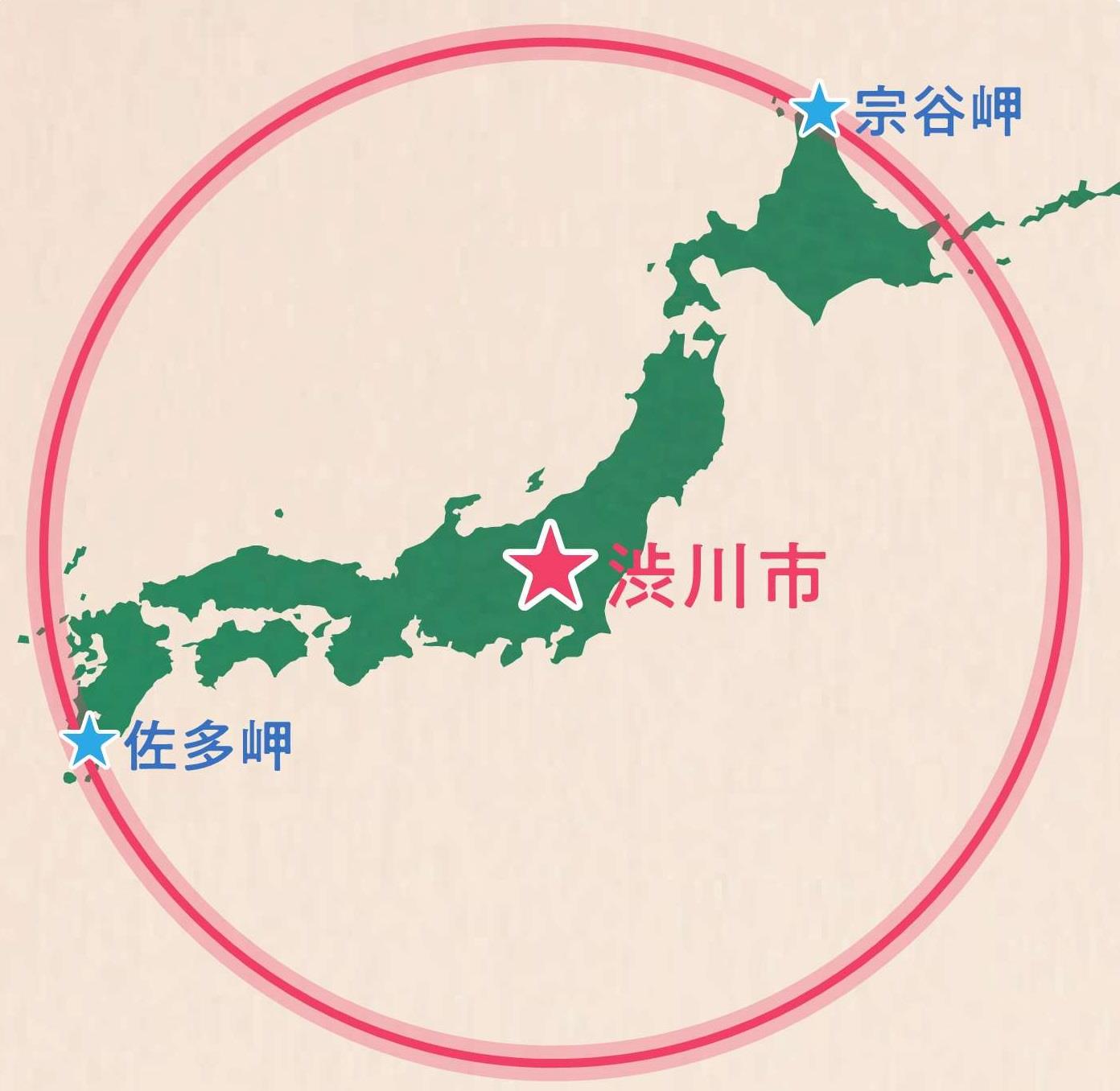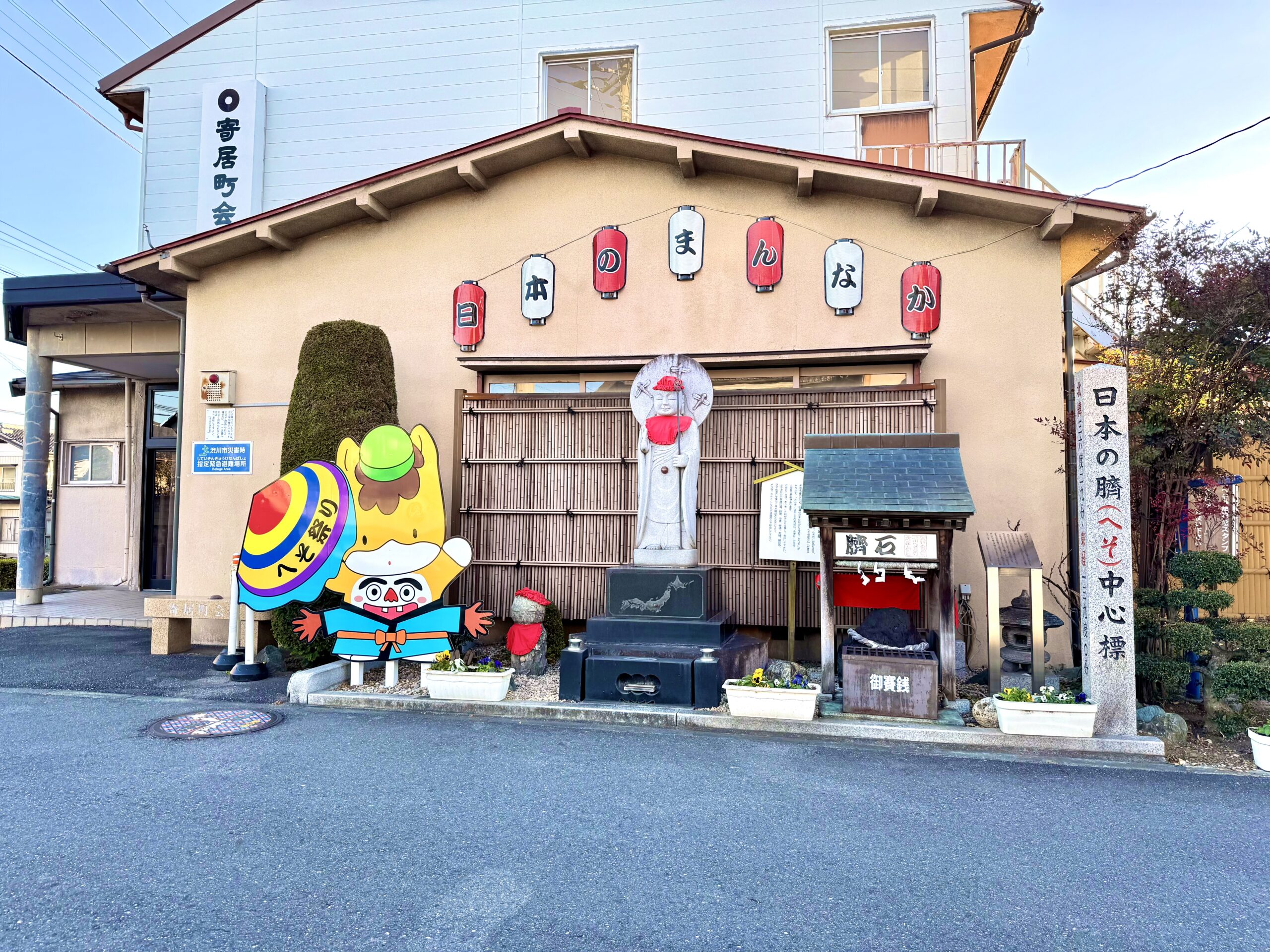When traveling through Japan, it is common to hear about major cities like Tokyo, Kyoto, and Osaka, or world-famous sights such as Mount Fuji. But sometimes, the most charming experiences come from smaller regional cities with unique claims to fame. One such place is Shibukawa City, located in Gunma Prefecture, which proudly promotes itself as “the bellybutton of Japan” or, more simply, “the Center of Japan” (日本のまんなか).
This symbolic title may not be scientifically precise, but it represents the city’s central location within the Japanese archipelago and highlights Shibukawa’s role as a cultural and geographical hub. For travelers looking for an off-the-beaten-path experience, Shibukawa offers not only the novelty of standing in the so-called middle of Japan but also a chance to enjoy hot springs, local history, and scenic nature.
The Symbolic “Center of Japan”
The idea of Shibukawa as the center of Japan comes from its location in the Kanto region, roughly equidistant from Tokyo and Niigata on the Sea of Japan side. In 1988, Shibukawa City declared itself “Japan’s Bellybutton” and even installed a landmark monument to represent the spot. This monument has become a quirky and fun attraction, drawing both locals and curious travelers who want to say they have visited the middle of Japan.

Every year, the city even hosts the “Japan Bellybutton Festival” (日本のへそ祭り) in July, where people gather to celebrate with parades, dances, and performers painting funny faces on their stomachs. It’s a playful and lighthearted event that embodies the spirit of community and creativity unique to this part of Gunma.
Shibukawa as a Gateway to Ikaho Onsen
While the bellybutton of Japan is the city’s quirky claim, Shibukawa is perhaps best known as the gateway to Ikaho Onsen, one of Japan’s most historic hot spring towns. Just a short bus ride from Shibukawa Station, Ikaho is famous for its stone steps street (石段街) lined with traditional inns, souvenir shops, and public baths. The mineral-rich waters of Ikaho’s hot springs have been soothing visitors for centuries, and the town has long been a destination for both Japanese poets and modern travelers.
This connection makes Shibukawa an excellent base for those who want to enjoy the cultural and historical depth of Japanese hot spring culture while also exploring a less touristy side of the country.
A Blend of Tradition and Nature
Beyond its central location and hot springs, Shibukawa is surrounded by beautiful natural scenery. The area offers spectacular views of Mount Haruna, one of Gunma’s famous mountains, as well as seasonal beauty that changes throughout the year. In spring, cherry blossoms paint the city pink; in summer, lush greenery and festivals bring energy to the town; autumn is famous for fiery foliage, especially around the nearby mountains; and winter brings crisp air and clear skies, often with Mount Fuji visible in the distance.
Shibukawa is also near Tone River, one of Japan’s largest rivers, offering riverside walks and outdoor activities. Whether you’re seeking cultural experiences or natural relaxation, Shibukawa provides a peaceful escape from Japan’s bigger urban centers.
Local Food and Specialties
A visit to Shibukawa would not be complete without tasting local flavors. Gunma Prefecture is well-known for its agricultural products, and Shibukawa offers a taste of hearty regional cuisine. Some highlights include:
- Mizusawa Udon (水沢うどん): One of Japan’s “Three Great Udon,” Mizusawa Udon is a specialty noodle dish with a smooth texture, often served cold with dipping sauce.
- Hot Spring Manju (温泉まんじゅう): Steamed buns filled with sweet bean paste, often enjoyed as a snack while walking through Ikaho Onsen.
- Local Vegetables and Fruits: Gunma’s fertile soil produces delicious seasonal vegetables and apples, which appear in many local dishes.
Food lovers will find that Shibukawa’s local cuisine perfectly complements the experience of visiting the “bellybutton of Japan.”
A Quirky Yet Memorable Stop
Shibukawa may not be as famous as Kyoto or Sapporo, but that is exactly what makes it so enjoyable. It combines quirkiness—thanks to its claim as the center of Japan—with cultural richness and natural beauty. For travelers who like to collect unique travel stories, being able to say, “I stood in the bellybutton of Japan” is certainly a memorable one.
The city’s welcoming atmosphere, traditional onsen culture, and easy access from Tokyo (about 2 hours by train and bus) make it a perfect day trip or overnight stop for those exploring Gunma Prefecture.
Conclusion
Shibukawa City’s identity as the “Center of Japan” may be playful, but it highlights an important truth: Japan’s charm lies not only in its world-famous landmarks but also in the smaller cities and communities that celebrate their unique heritage. Visiting Shibukawa means more than just standing at a monument—it’s about experiencing a blend of history, hot springs, local food, and a warm community spirit.
If your travels take you through the Kanto region, consider adding Shibukawa to your itinerary. Whether you are soaking in Ikaho Onsen, enjoying a bowl of Mizusawa Udon, or simply taking a photo at the bellybutton of Japan, you’ll leave with a story that few tourists can claim.



comment